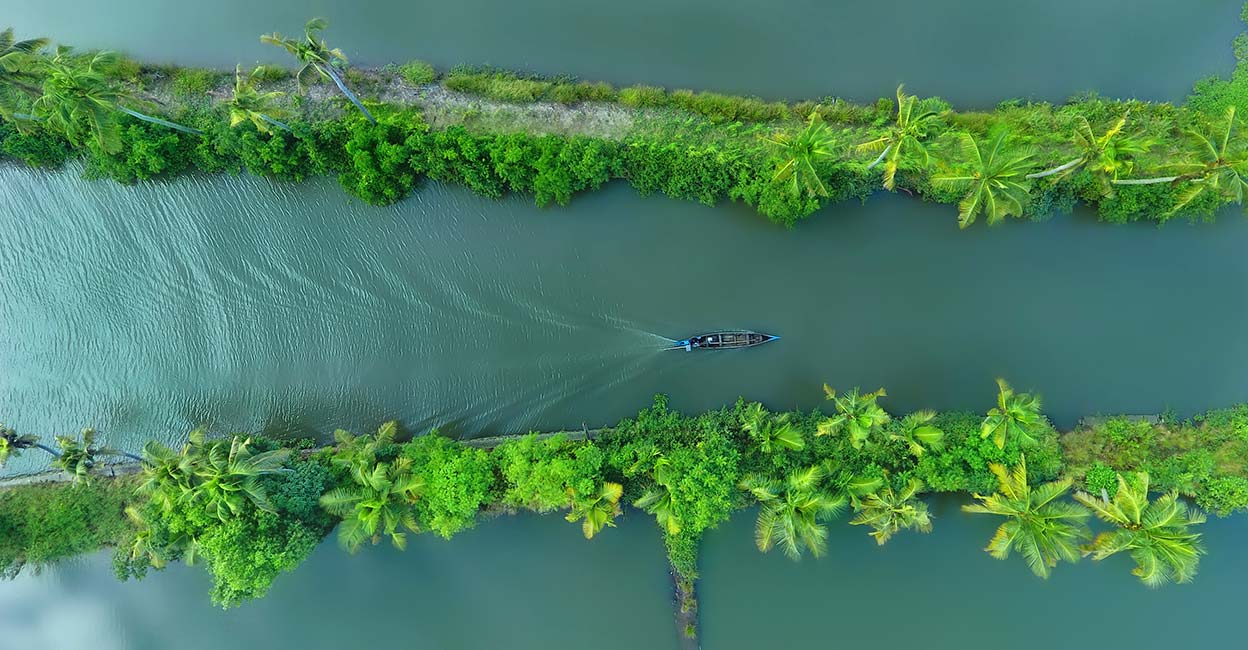How M S Swaminathan tried his best to revive unique ecosystem of Kuttanad

Mail This Article
Alappuzha: Prof M S Swaminathan, the Father of the Green Revolution Movement in India, who passed away on Thursday, was instrumental in making a heroic attempt to revive the fast-dwindling rice production in the traditional farming region of Kuttanad wetlands, known as the rice bowl of Kerala.
It was primarily the many studies and researches conducted by the foundation chaired by him, M S Swaminathan Research Foundation (MSSRF), that had sensitised the State Government and the world to the problems of the region and prompted them to come out with measures to mitigate the agrarian distress.
"Swaminathan, a native of Mankombu here, took a special effort to first study the agrarian crisis in detail and later come up with productive suggestions to save the agrarian sector in Central Kerala," said Dr G Nagendra Prabhu, Head of Zoology Department, Alappuzha SD College. "It was based on the Foundation’s study report that the State Government came up with the Rs 2134 crore -Kuttanad package. In fact, the package aimed at developing the region and people in the region was designed by the agricultural scientist himself," he said.
The studies conducted by Swaminathan also led to the Food and Agricultural Organization declaring the Kuttanad Wetland Agriculture System as a Global Agricultural Heritage System in 2013.
The agriculture practice of the Kuttanad wetlands is unique because it is below-sea farming; in large areas, in land created by draining delta swamps in brackish waters, rice cultivation is done up to two meters below the sea level.
However, rice production, especially in the Onattukara and its northwestern coastal regions known for its unique Pokkali cultivation, began to dwindle. While designing the Rs-2,139-crore Kuttanad Package, arguably the largest financial package for a single region, Swaminathan envisioned a comprehensive restoration of the region’s unique and sensitive ecology.
Swaminathan, as the "son of the soil" and "member of the famed Mankombu family" had a clear understanding of the indomitable spirit of Kuttanad natives in overcoming adversities. He was also fully aware of the significance of conserving the age-old agricultural expertise of Kuttanad farmers, who have been cultivating rice in fields for over a century and a half.
"The package will help not just achieve eco-restoration but ensure livelihood rehabilitation, economic prosperity and ecological security of the residents of Alappuzha district and the adjoining areas that fall under the Kuttanad ecosystem," he had observed while addressing the function that marked the official launch of the package here in 2008.

The Committee led by MS Swaminathan Committee had submitted the report on the "Measures to mitigate agrarian distress in Alappuzha and Kuttanad wetland ecosystem" in 2007. The report emphasized the need to strengthen ecology, health, sanitation, crop-based agriculture, livestock-integrated agriculture, and fisheries-based agriculture as well as the tourism potential of the below-sea-level region.
The report noted that floods occurred when excess water from various water bodies could not drain out into the Arabian Sea and, therefore, recommended deepening the Alappuzha-Changanassery Canal and removing all encroachments, water weeds, silt, and other sediments that hinder water flow in the canal.
To ensure the effective implementation of the package, he also called for active people's participation and a synergy of political will, professional skills, and farmers' wisdom. Being a people's plan, Swaminathan insisted on a "bottom-up" approach during implementation.
On the ground, however, it worked the other way. Shoddy implementation and lack of coordination between government departments scuttled the dream of reviving the agricultural heritage of Kuttanad. For people of Kuttanad who live across 62 Gram Panchayats spread across the three districts of Alappuzha, Kottayam and Pathanamthitta, recurring floods, torrential downpours, intrusion of saline water, and crop damage are constant threats.
The catastrophic weather events, especially since the megafloods of 2018, seem to have also triggered an outward migration of people from this climate hotspot.

